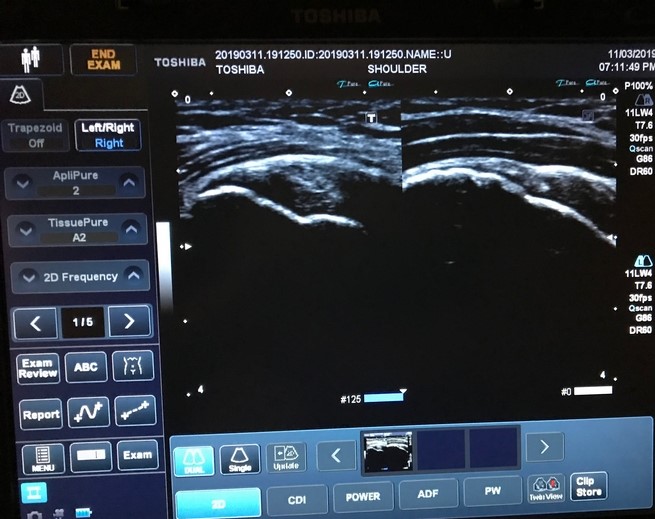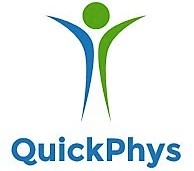QuickPhys clinicians have an high level of success in reducing inflammation with guided injection therapy.
QuickPhys clinicians have years of experience in delivering appropriate rehabilitation to encourage tissue repair and minimise mechanical irritation.
QuickPhys also recognise the need for surgery and other clinical skills. Not everything is best managed with injections and exercises. With vast experience and contacts throughout Yorkshire, we will ensure your health always comes first.
Success
There are many measures of success, but if you identify a lifestyle that you consider to be successful, then simply learn from someone who has achieved that way of life. The video below is a presentation by a 93 year old man. His key message is work, diet and exercise. QuickPhys recognise that health problems and pain can limit a person's ability to achieve these health goals, but with appropriate advice improvements can be made. As the gentleman concludes, 'Go for it !'Success in improving the mechanical function of body tissues and the reduction in inflammation will provide long term success and decrease the experience of pain.
How 'Pain' scores are damaging the public's health!
 Are 'Pain' scores damaging the public's health!
Ever been asked to score your pain out of 10?
Ever been asked to describe your pain and even draw a picture of where it is?
Ever wondered why?
We are taught to believe that a description of our pain and its intensity will help us to find out what’s wrong. This approach has grown in popularity, in part fuelled by a trend in cultural expectations that we should be pain free. In part driven by commercial practice that attempts to sell a 'pain free' lifestyle. It is both tempting and financially lucrative.
So does this approach work?
No. The number of people with long term pain is rising, mental ill health associated with pain is rising, the financial cost for the management of long-term pain is increasing and the health of the nation is decreasing.
So why is it that a standard medical consultation spends time discussing a persons experience of pain and how it affects them?
There are several reasons, the key ones include:
Are 'Pain' scores damaging the public's health!
Ever been asked to score your pain out of 10?
Ever been asked to describe your pain and even draw a picture of where it is?
Ever wondered why?
We are taught to believe that a description of our pain and its intensity will help us to find out what’s wrong. This approach has grown in popularity, in part fuelled by a trend in cultural expectations that we should be pain free. In part driven by commercial practice that attempts to sell a 'pain free' lifestyle. It is both tempting and financially lucrative.
So does this approach work?
No. The number of people with long term pain is rising, mental ill health associated with pain is rising, the financial cost for the management of long-term pain is increasing and the health of the nation is decreasing.
So why is it that a standard medical consultation spends time discussing a persons experience of pain and how it affects them?
There are several reasons, the key ones include:
- All NHS contracts in orthopaedics stipulate that outcome measures based on pain scores are put in place as part of service contracts. Consequently, the clinicians have to ask and patients have to score high in order to gain access to care.
- It is cheaper to talk about pain than it is to investigate.
- Many clinicians are taught to ask about pain and there is trend in becoming more empathetic as opposed to diagnostic. 'How do feel' has gained priority over 'this is what's wrong'.
 Following investigation we should also acknowledge 'normal' findings as a process of exclusion. We should understand that not all pain arises because of damaged tissue, pain can occur because of irritation without damage. Most back pain for example occurs because of poor posture and patterns of movement, not medical pathology. We should therefore measure our improvements in mechanical and chemical terms if we really want to improve our health. The 'pain alarm' will then turn itself off.
Is it really that simple?
Yes and no. Yes, because best mechanical function and best chemistry are key to making us healthy.
No, because nationally this would require a significant shift in financial resources and a change in the current model of healthcare. We would need frontline clinicians with appropriate diagnostic skills, the time to diagnose and access to investigations.
It is however simple on an individual level, because it is easier for one person to elicit change than a national organisation.
If you are in pain but don't know what tissues are damaged or irritated, then a physical examination enhanced by ultrasound is a great place to start. It costs £75.
Book your initial consultation including ultrasound scan
www.injectionclinic.co.uk/sheffield/
Following investigation we should also acknowledge 'normal' findings as a process of exclusion. We should understand that not all pain arises because of damaged tissue, pain can occur because of irritation without damage. Most back pain for example occurs because of poor posture and patterns of movement, not medical pathology. We should therefore measure our improvements in mechanical and chemical terms if we really want to improve our health. The 'pain alarm' will then turn itself off.
Is it really that simple?
Yes and no. Yes, because best mechanical function and best chemistry are key to making us healthy.
No, because nationally this would require a significant shift in financial resources and a change in the current model of healthcare. We would need frontline clinicians with appropriate diagnostic skills, the time to diagnose and access to investigations.
It is however simple on an individual level, because it is easier for one person to elicit change than a national organisation.
If you are in pain but don't know what tissues are damaged or irritated, then a physical examination enhanced by ultrasound is a great place to start. It costs £75.
Book your initial consultation including ultrasound scan
www.injectionclinic.co.uk/sheffield/
There are many measures of success but as discussed in the sections 'Understanding pain' and 'Our Services', QuickPhys aims to decrease inflammation and restore best mechanical function.
QuickPhys will therefore measure success by observing improvements in strength, alignment, joint mobility and even the reduction of inflamed tissue via the use of live ultrasound scans.
With these observed improvements it is highly likely that a person will then experience a reduction in their symptoms.
With better health there is a strong likelihood that the experience of pain will subside.

